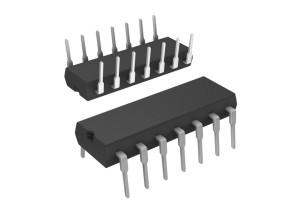What Are Comparators and Their Uses, Along with Key Characteristics?
Comparators, often regarded as unsung heroes in the realm of electronics, are fundamental components that enable voltage comparison, signal conditioning, and decision-making in a myriad of circuits and systems. These versatile devices serve as the cornerstone of analog and digital electronics, providing high-speed, precision voltage comparison and outputting digital signals based on the comparison results. In this blog post, we delve into the world of comparators, unravelling their functionality, diverse applications, and key characteristics that make them indispensable in modern electronics.
Understanding Comparators: The Heart of Voltage Comparison
At the core of every comparator lies the ability to compare two voltage inputs and output a digital signal indicating the relationship between them. Unlike operational amplifiers, comparators are designed to operate in open-loop configurations, providing rapid response times, high gain, and well-defined threshold voltages for precise comparison tasks. By leveraging the inherent hysteresis and saturation characteristics of comparators, circuit designers can create robust voltage monitoring, level detection, and signal conditioning circuits that drive a wide range of applications in electronics.
Key Characteristics of Comparators: Speed, Hysteresis, and Output Drive
1. Speed and Response Time: Comparators are known for their high-speed operation, making them ideal for applications that require rapid voltage comparison and decision-making. With response times in the nanosecond range, comparators excel in time-critical tasks such as pulse-width modulation, waveform shaping, and signal detection in communication systems.
2. Hysteresis: Hysteresis, a key characteristic of comparators, introduces a small amount of positive feedback to prevent oscillations and ensure stable switching behavior near the threshold voltage. By incorporating hysteresis into comparator circuits, designers can eliminate noise-induced false triggering and enhance the reliability and accuracy of voltage comparison tasks.
3. Output Drive Capability: Comparators typically feature open-collector or open-drain outputs that can sink or source current to external loads. This output drive capability enables seamless interfacing with digital logic circuits, microcontrollers, and other components, allowing comparators to drive LEDs, relays, alarms, and other output devices based on the comparison results.
Applications of Comparators: From Voltage Monitoring to Pulse Generation
1. Voltage Detection and Monitoring: Comparators are widely used in voltage detection circuits to monitor power supply voltages, battery levels, and sensor outputs. By setting reference voltages and threshold levels, comparators can trigger alarms, shutdown sequences, or corrective actions based on the input voltage conditions.
2. Window Comparators: Window comparators, a specialized type of comparator circuit, enable the monitoring of voltage levels within a specified range or window. By setting upper and lower threshold voltages, window comparators can detect when input voltages fall outside the desired range, triggering appropriate responses or control actions.
3. Pulse Width Modulation (PWM): Comparators play a crucial role in generating PWM signals used in motor control, power converters, and analog signal processing applications. By comparing a triangular waveform with a variable input voltage, comparators produce pulse-width modulated signals that regulate the duty cycle and control the speed or intensity of connected devices.
4. Zero-Crossing Detectors: Zero-crossing detectors, implemented using comparators, detect the precise moment when an AC signal crosses the zero voltage reference point. By providing synchronized outputs that align with the AC waveform's zero crossings, zero-crossing detectors enable precise timing, synchronization, and control in applications such as phase-locked loops and power electronics.
Future Trends and Innovations in Comparator Technology
As the electronics industry continues to evolve, comparators are poised to witness advancements in speed, power efficiency, and integration capabilities to meet the demands of emerging applications such as IoT devices, automotive systems, and smart sensors. Innovations in low-power comparator designs, rail-to-rail operation, and integrated functionalities will enable designers to create compact, energy-efficient circuits that deliver high-performance voltage comparison in a variety of challenging environments.
Embracing the Versatility of Comparators: A Journey of Innovation and Exploration
In the ever-changing landscape of electronics, comparators stand as stalwart companions, guiding designers and engineers through the intricacies of voltage comparison, signal processing, and decision-making with precision and reliability. By understanding the key characteristics, applications, and future trends of comparators, we gain a deeper appreciation for their versatility and significance in shaping the functionality and performance of electronic systems across diverse industries and applications.
As we embark on this journey of exploration and innovation, let us embrace the potential, possibilities, and transformative impact that comparators bring to the world of electronics, paving the way for new discoveries, advancements, and breakthroughs that propel us towards a future filled with possibilities and promise.

